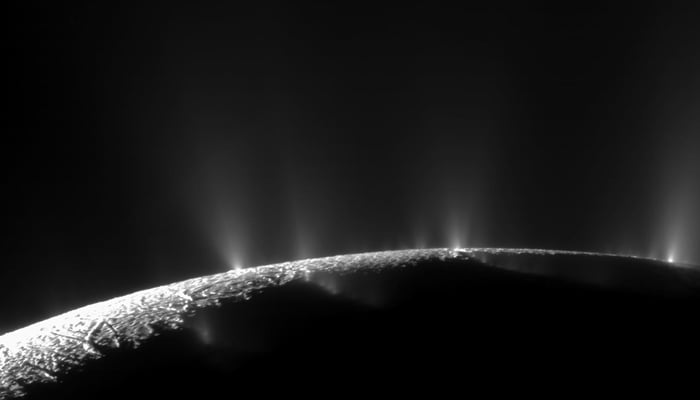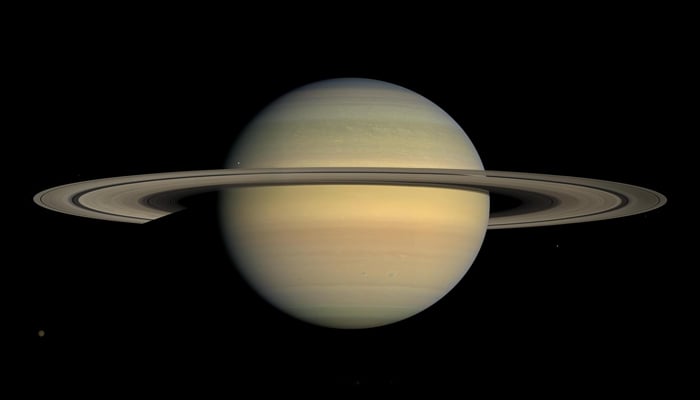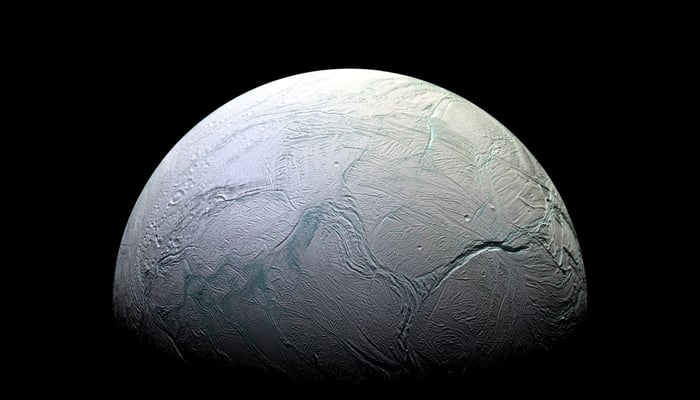Will experts find life on Saturn's moon Enceladus?
Enceladus moon emits gas and ice grains into space
April 21, 2024

Astronomers studying Saturn and its 146 moons have turned their attention to discovering the signs of extraterrestrial life on one of the planet’s moon Enceladus in which scientists last year discovered all the elements of life.
In a joint space mission of the European Space Agency, the Italian Space Agency, and Nasa, Cassini sent back crucial information from 2004 to 2017 revealing that under the icy crust, there is an ocean of water.
The moon emits gas and ice grains into space and samples from Enceladus cleared the picture about the composition of Saturn’s natural satellite.

The elements found were sodium chloride, carbon-based compounds, water, and a heating process — key ingredients for life, according to Fabian Klenner who is a planetary scientist and astrobiologist at the University of Washington (UW).
Last year, experts found another life-supporting compound, called phosphate from the moon’s ocean — which is a part of DNA, cell membranes, and bones.
Frank Postberg, a planetary scientist at the Free University in Berlin, said last year: "It's the first time this essential element has been discovered in an ocean beyond Earth."

Scientists are hopeful of finding traces of life on Enceladus.
Klenner wrote in an article published in The Conversation that he along with other experts conducted a test to see whether signs of life could be traced by a dust analyser emitted in the ice grains.
They found that the instruments can identify cellular material.
Though the dust analyser on Cassini does not have such capabilities experts are designing equipment with greater capabilities for such purpose.
Saturn’s icy moon Is not the only one with liquid water but Jupiter’s Europa also has an ocean and the icy crust.
Nasa designated a Clipper mission for Europa that will embark in October this year and arrive at Jupiter in April 2030.











